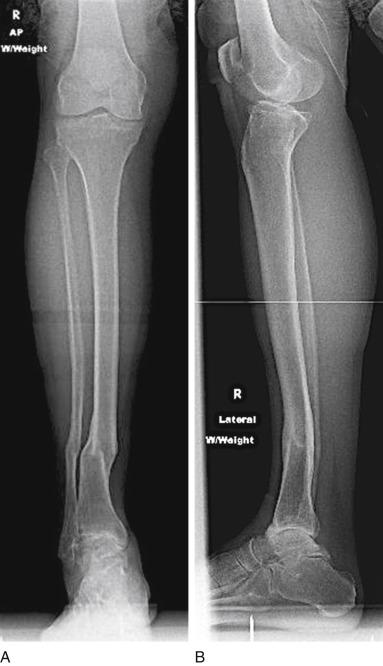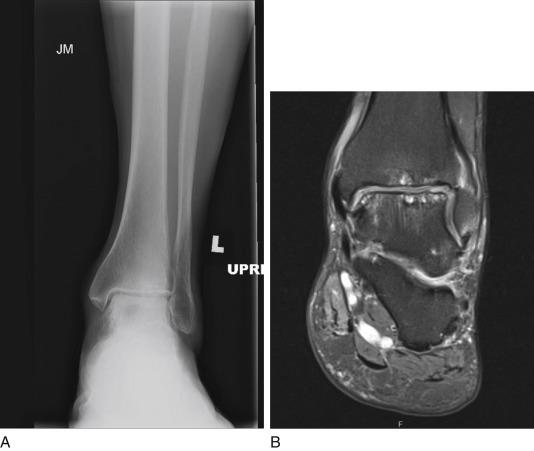Physical Address
304 North Cardinal St.
Dorchester Center, MA 02124
Symptomatic arthritis of the ankle
Patients with compromised anterior tissue
Prior lateral scar from fracture fixation, lateral ligament reconstruction, or peroneal tendon surgery
Contralateral ankle fusion
Symptomatic arthritis of the ankle with adjacent joint arthritis
Ankle deformity that involves a malunion or deformity of the fibula
Sagittal plane deformity (anterior or posterior translation) of the ankle
Valgus deformity with shortened or valgus fibula
Varus deformity with varus fibula and contracted deltoid
Rotational deformity of the ankle
Prior ankle fusion with intact fibula
Flat top talus or low domed talus with ankle arthritis
Acute avascular necrosis of the talus
Charcot arthropathy
Local/systemic infection that may affect the prosthetic joint
Severe neurologic or vascular disease affecting the extremity
Poor lateral skin quality
Severe osteoporosis
Immunosuppressive therapy
Previous joint infection
Severe nonreconstructable deltoid insufficiency
A nonreconstructable nonplantigrade foot
Age and body mass index of the patient must be taken into consideration.
Consider an ankle fusion in a patient with normal subtalar and transverse tarsal motion.
A previous posterolateral incision adjacent to the Achilles tendon can make the operative approach difficult. A prosthesis that uses an anterior approach may be preferable.
Standing anteroposterior (AP) and lateral views of the ankle, and an AP view of the foot. Including the lower two thirds of the tibia helps identify occult deformities. In cases of significant malalignment of the ankle or leg, comparative views of the opposite side are helpful.
A Saltzman view can be helpful to appreciate hindfoot and ankle alignment.
Look for a flat top talus on the lateral view. If present, less bone should be removed from the talus during the procedure (see technique outlines below).
Evaluate for a malunion of the fibula that may have to be corrected.
Standing AP and lateral views that include the ankle and knee are essential when deformity is present in the tibia or the ankle ( Fig. 58.1 ).

A standing AP view that includes the hip, knee, and foot is helpful in difficult cases of malalignment ( Fig. 58.2 ).

A magnetic resonance image will demonstrate arthritis of the ankle and/or subtalar joint that may not be detected on plain radiographs ( Fig. 58.3 ).

In the face of subtalar arthritis a total ankle is preferable to an ankle fusion.
A computed tomography scan will demonstrate bony voids, cysts, or fracture nonunions that may need to be addressed.
A technetium and indium labeled white blood cell scan to assess infection, if indicated.
Carefully determine the etiology of ankle malalignment: lateral ligament laxity or medial bone erosion; deltoid laxity or lateral bone erosion; tibial or talar malunion.
Evaluate the range of motion of the ankle, subtalar, and transverse tarsal joints. Is a deformity passively correctable?
Significant ankle laxity can obfuscate an accurate assessment of subtalar motion.
Is there an associated peritalar collapse from posterior tibial tendinopathy?
Is there a cavovarus from peroneal tendon pathology?
With the patient standing, evaluate overall alignment of the lower extremity, and especially the foot.
Watching the patient walk down the hallway will reveal dynamic deformities and mechanical contributions from other lower extremity pathology.
Achieving a plantigrade foot is a prerequisite to a successful outcome.
Test muscle strength and look for atrophy.
Evaluate the neurovascular status.
Carefully document previous incisions and the quality of the lateral tissues. Make sure adequate skin bridges will be present with the lateral approach.
Fixed ankle foot orthosis
Viscosupplementation injection may be beneficial
Cortisone injection may provide transient relief of symptoms
Platelet rich plasma or bone marrow concentrate injection may be beneficial
Cushioned orthotics and shoe modification
Nonsteroidal antiinflammatory drugs
Ankle débridement
Revision ankle fracture malunion
Supramalleolar osteotomy
Ankle arthrodesis
A total ankle arthroplasty through an anterior approach
The heel should be 6 inches from the end of the table to allow room for the frame.
Ensure that there is sufficient space to allow the frame to be near the center of the table.
If the leg rests of the table are not firm, a stiff board is used to prevent the frame from shifting.
A bump or bean bag under the ipsilateral hip to lift up the hemipelvis 15–20° is needed to position the foot to 15–20° internally rotated.
Secure the opposite leg so that it is not inadvertently pushed off the operating room table during the procedure.
An arm rest placed at the side of the end of the table allows the contralateral leg to be stable.
A pile of folded blankets 4–6 inches thick and large enough to support the frame is placed from the end of the table to the knee level. Secure it with circumferential tape to the table. This elevates the operative leg to facilitate the lateral C-arm images.
Become a Clinical Tree membership for Full access and enjoy Unlimited articles
If you are a member. Log in here